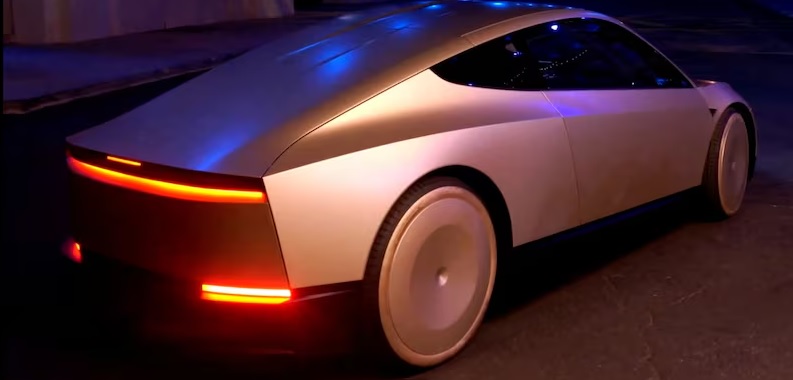
(Photo : Tesla)
Robotaxi
- Tesla CEO Elon Musk unveiled the "Cybercab," a two-door robotaxi, marking a shift towards autonomous transportation.
- The Cybercab, set for production in 2026, will be priced under $30,000 and operate at a cost of 20 cents per mile.
- Musk plans to operate a fleet of self-driving Tesla taxis that can be hailed through an app.
- Despite investor concerns and regulatory challenges, Musk remains optimistic about the future of autonomous vehicles.
In a groundbreaking event that marks a significant shift in Tesla's strategic direction, CEO Elon Musk unveiled a two-door robotaxi, the Cybercab, with gull-wing doors and devoid of a steering wheel or pedals.
The event, held at the Warner Bros studio near Los Angeles, California, was a testament to Tesla's transition from a traditional automaker to an AI robotics company, underscoring their ambitious plans for autonomous transportation and a potential new era of mobility.
The Cybercab, which Musk said would go into production in 2026 and be priced less than $30,000, is a testament to Tesla's commitment to making autonomous vehicles accessible to the masses. The operation cost of the Cybercab is projected to be 20 cents a mile over time, with charging being inductive, thus eliminating the need for plugs.
Musk's vision for the Cybercab is not just about the vehicle itself, but also about the broader ecosystem it will operate within. He plans to operate a fleet of self-driving Tesla taxis that passengers can hail through an app. Individual Tesla owners will also be able to monetize their vehicles by listing them as robotaxis on the app.
The Future of Autonomous Vehicles
The Cybercab's unveiling was not the only highlight of the event. Musk also showcased a larger, self-driving vehicle - the Robovan - capable of carrying up to 20 people, and Tesla's Optimus humanoid robot. These innovations further underscore Tesla's commitment to leveraging artificial intelligence and robotics to revolutionize transportation.
However, the event was not without its critics. Investors and analysts have expressed concerns about the technical and regulatory challenges associated with Tesla's approach to autonomous vehicles.
Unlike other companies in the robotaxi market that rely on expensive hardware such as lidar, Tesla is banking solely on cameras and AI to run its Full Self-Driving (FSD) system. This approach, while potentially cost-effective, has faced regulatory and legal scrutiny, particularly in light of at least two fatal accidents involving the technology.
Despite these challenges, Musk remains optimistic about the future of autonomous vehicles. The autonomous future is here, he declared at the event, adding that Tesla already has 50 fully autonomous cars in operation. He also announced plans to start fully autonomous, unsupervised FSD in Texas and California next year, with the Model 3 and Model Y.
Investor Concerns and Market Challenges
However, some investors were left wanting more concrete details on how quickly Tesla can ramp up robotaxi production, secure regulatory approval, and implement a strong business plan to leapfrog rivals such as Alphabet's Waymo. "Everything looks cool, but not much in terms of timelines," said Dennis Dick, an equity trader at Triple D Trading. "I think the market wanted more definitive timelines."
Tesla's unveiling of the Cybercab comes at a critical time for the company, which is at risk of posting its first-ever decline in deliveries this year. Buying incentives have failed to attract enough customers to its aging EV lineup, and steep price cuts meant to offset high interest rates have squeezed profit margins.
Despite these challenges, Tesla's unveiling of the Cybercab and its broader vision for autonomous transportation is a significant milestone in the history of the automotive industry. It echoes similar historical events, such as the unveiling of the Model T by Henry Ford in 1908, which marked the beginning of affordable automobiles for the masses.
Just as the Model T revolutionized transportation in the 20th century, Tesla's Cybercab has the potential to redefine mobility in the 21st century.









